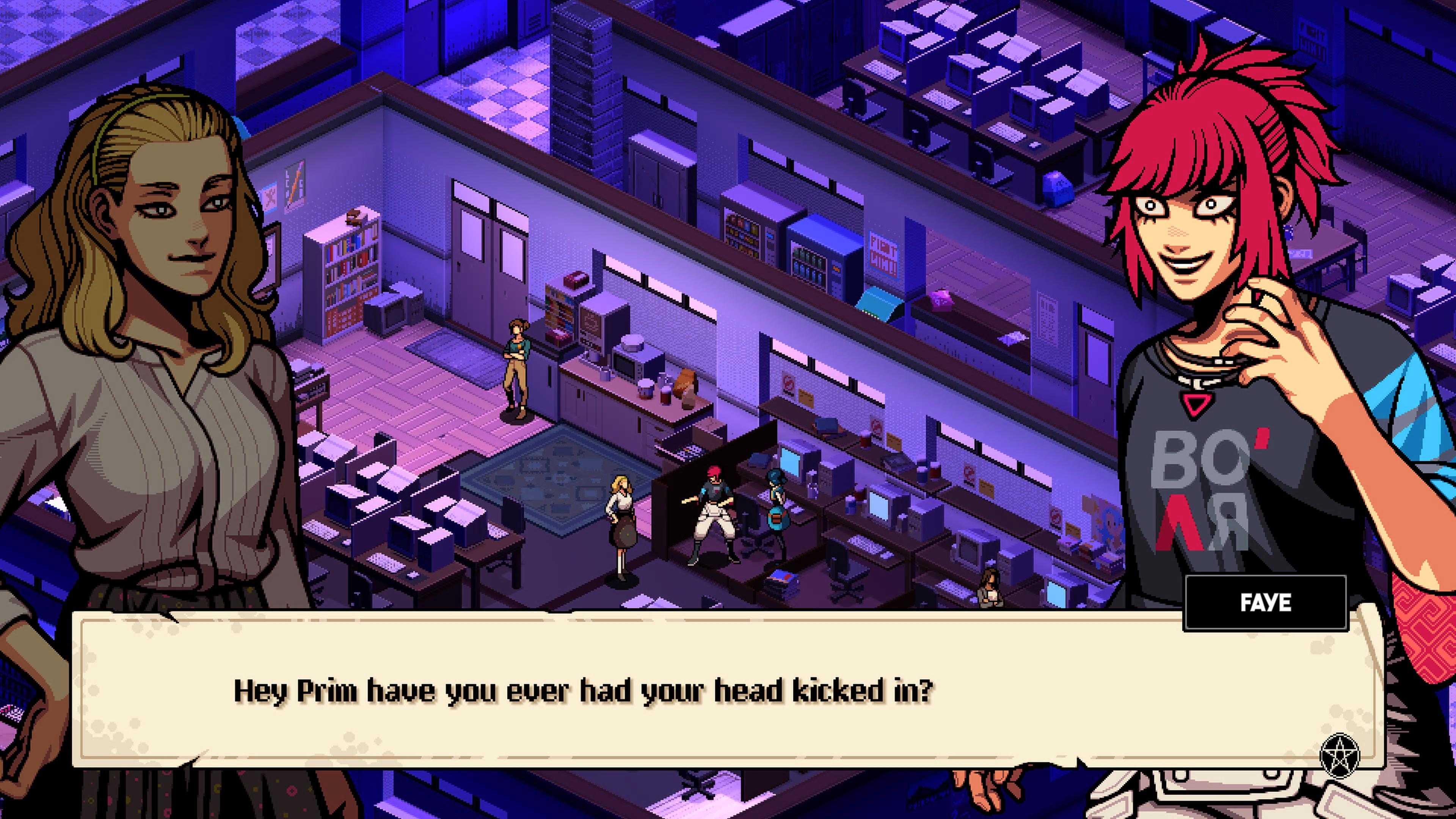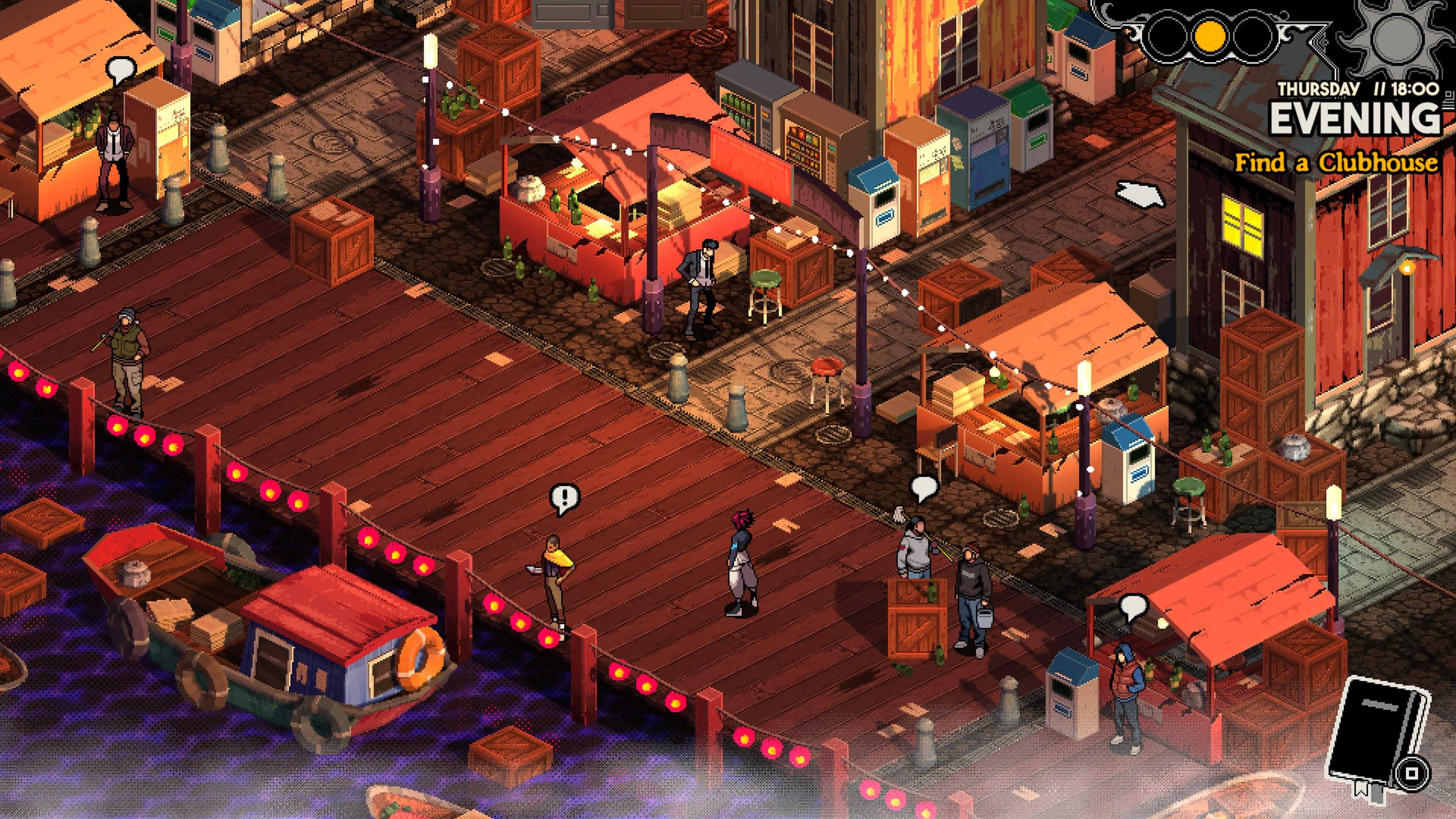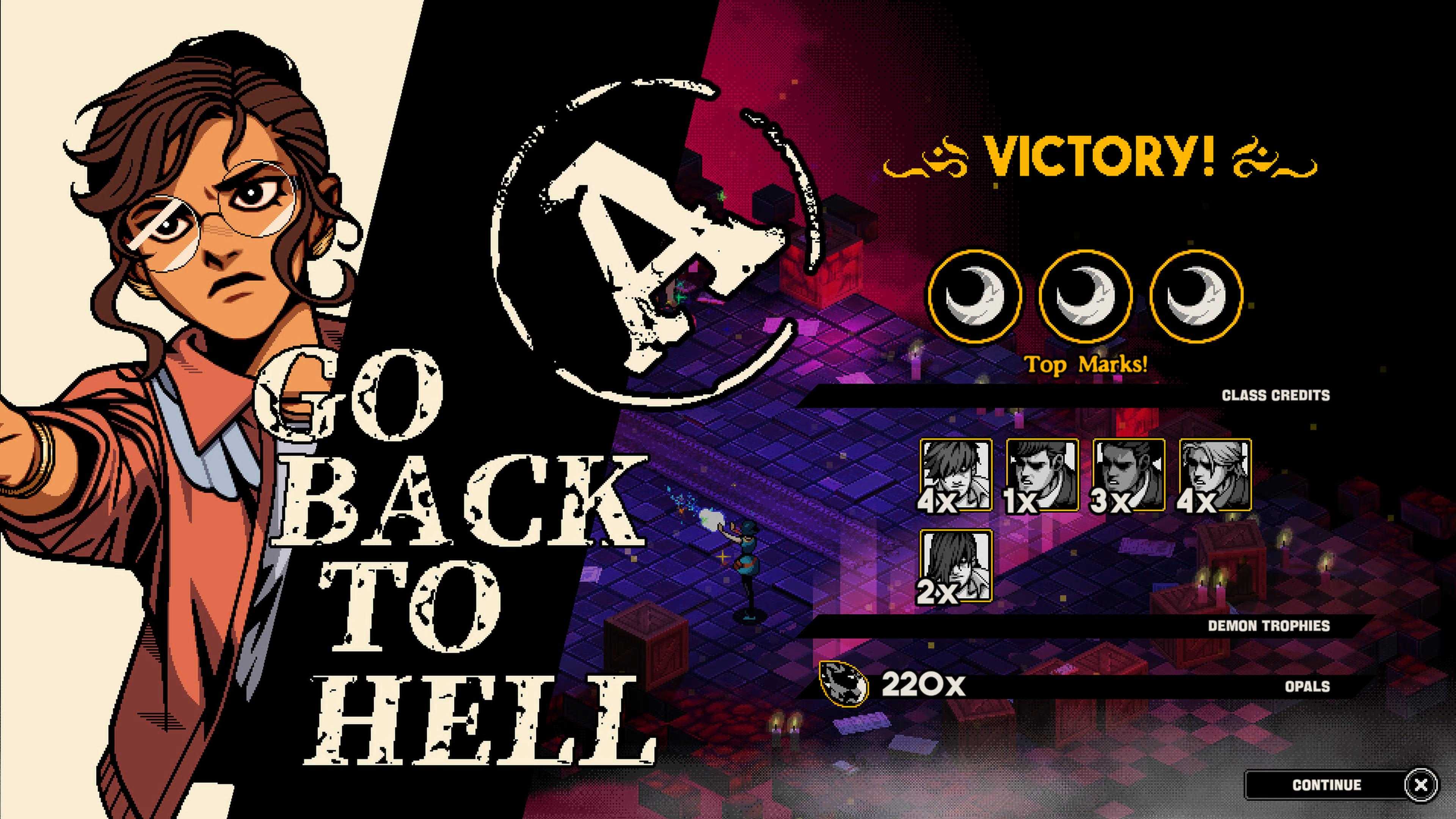I started playing Demonschool back in August. Usually, you do not get codes for games, even indie games, THAT early on, but of course, the game was delayed when it was announced Silksong, a juggernaut of a title that was announced to be finally releasing around the same time. The sentiment was understandable, getting as far away from that window as possible since a game one of those games was undoubtedly about to be a mega hit, and the other was a new game just vying for exposure, but it is still hard not to feel bad for a potential great experience to have to wait to be experience, even though it it is finished and ready. Well, the word potential doesn’t really fit anymore, given that having spent as much time with it across PC and PS5 as I have, it more than lived up to the game I had built up in my head, though nowhere near what I expected.
Demonschool is slow to start, which might be the most Persona thing about a game inspired by the original Persona. Starting on a boat to an island, you are given the rundown from the lead protagonist Faye, that there is an apocalypse coming and demons will roam free. In what, at the time, felt like a bad idea, but ultimately has the first rewarding payoff in a long series of them that the game pulls off. This is the long con of making your main character seem like a crazy person right up until she is proven to be right. In a long-form RPG, you can see this twist coming, but it’s the first step of building her into a likable protagonist, by going in the opposite direction, as counterintuitive as that might sound.

This pays off when all the characters realize they are pretty much trapped at this school, on this island, where the expectation is to attempt at a normal school life, while the end of the world slowly builds. Like one might expect, the main cast that joins your party forms the brunt of all interactions as they attempt to solve the mysteries surrounding the school, as well as subvert the end of the world. There are moments when the narrative broad strokes, summing moments in quick revelations or dragged on narratives that ultimately end with your party feeling like they lack momentum, but it works even at its worst, given that the cast are all just so charming. It’s when the game starts to explore their issues, which it introduces and works backwards from that, making these smaller moments all the more rewarding when you reach them.
Demonschool also makes the smart more of not being written like a horror game, despite clearly being influenced by them. This is because the small but stylish areas bear neon glow and atmospheric lighting that clearly takes a cue from Italian Horror master Daria Argento. In particular, his well-known film Susperia. There isn’t this oppressive fear that hangs over the world in a traditional sense, but the world itself is built to evoke it. Moment to moment, the game World of Horror came to mind as well, with a similar rural Japanese aesthetic that embraces oddity as just par for the course. This whole vibe mixes with the offbeat jazz of the soundtrack that fully invokes the kind of game that wants you to take your time and enjoy the ride.
The first moment you are introduced to your teacher, he is killing students with the lead cast, having no idea. Then, he is comically giving you occult adjacent tasks with a smile on his face, and Faye sorta just goes with it. Namako plays the straight man in what would otherwise be a Manzai comedy routine, calling out how out of place this all is, but not getting through. And you, the player, get all of this. Enjoying the sheer absurdity of how all this is being layered on the characters and how the lead protagonists become resigned to doing this with none of the context you have. This allows the growing dread to linger behind the events, even as the events themselves have you laughing at how occasionally all your characters resolve to resolve everything in the worst ways possible, but never in the same ways.

The overall narrative is a throwback to classic RPGs and horror, but only uses them as a baseline and for aesthetic and feeling. At the core, it is a party-based game that uses turn-based combat as part of its challenge loop. I expected this to play more traditionally, given the aesthetic harkens back to the first two entries in the Shin Megami Tensei spinoff series, before the inclusion of social links. This being said, it really doesn’t play like you would expect. There is no leveling system. The only element that I am still a little bummed about is missing. In actuality, combat plays out more like a puzzle game rather than that of a traditional RPG, but blends that with a roster of characters to give it as much depth as the latter.
Each character can move along the grid several spaces along the combat grid. Some straight-up attack, others have knockback, and one debuffs characters she dashes through. It can take a little while to begin unlocking every mechanic that plays into this, so, because of the lack of level progression, it seems that it is stagnant. The goal is that you need to eliminate a set number of enemies, then reach the opposite side of the field with one of your party members to seal the rift and end combat. The twist to this is that you are racing to complete this in a set number of turns to get the highest payout from combat that you can. To this end, both enemies and your party have low health counts and some form of a janken that forces you to not only try to maximize the elimination of enemies per round, but also find a way to do so without ending combat with your party members in a compromised position on the board.
The combat flows through two phases, the planning phase in which you run through all the moves you can make, a the execution phase where you actually do so. Characters can move more than once per turn, but cost more to move per move. This allows for the strategic setting of combat. Namako makes enemies take more damage by shifting through them. This moves them a space, so you can use her to shift through multiple enemies to line them up, then have Faye or Destin obliterate an entire row in one move. Knute, a healer, can’t attack, which might seem like it limits you, but having characters move more aggressively while being able to get some form of relief after the enemies counter. Then factor in each character’s special move that they build by attacking, which allows them to get even more aggressive without the need for combo building.

It’s a combination of these and additional factors, as the game progresses, that keeps the player trying new combinations of skills and characters to set up the situation exactly the way they want. The RPG element, for what it’s worth, comes from making a point to not let ‘puzzles’ be one note. There are never singular solutions to completing combat, with each move like chess pieces on a board, dependent on not maximizing your stride in the here and now, but instead looking ahead to make sure your play is defensible and helpful for forward progression. Of course, there is a bit of randomness that you will not encounter in chess, such as moving all your characters to one side in a big push, only for the next round to see every enemy spawn on the other side, out of range of movement. Thankfully, Demonschool allows you to easily restart rounds, but this can begin to rack up more time than you were expecting, as the relatively short matches start piling on top of each other.
It does become annoying just how much of the game revolves around this combat, given that while you get items from combat, the do are mostly a test to get through. Side quests, for instance, either have you talk to somebody where you learn stuff and nothing happens, save for another indicator to continue the side quest, or… You fight. The main narrative, for the most part, throws these fights at you every step of the way. There are other things later to consume your time, like Karaoke, which has an interesting text-based mini game, or fishing, which is pretty much expected at this point. They help to diversify the experience. Since combat isn’t simply fighting enemies but is associated with narrative beats, and a process rather than just fighting, a few fewer instances would have been welcome. This doesn’t hold the experience back at all, which is great, but it is worth noting.
If you were wondering how boss fights could work with this formula. Honestly, surprisingly well. The bosses still act as puzzles to some degree, but they shift the focus to avoiding the hazards in your way rather than just beating them fast. The first boss, a pile of TVs, moved each round and created hazard zones on the floor. In addition, it summons Zombies because why wouldn’t it? The goal is to figure out how to press the attack while ending your turn outside of the death zone, and in a way that zombies will not tear you apart. Easier said than done, but so rewarding when you see the gaps in the matrix you can exploit and come out unscathed. Didn’t expect to love it as much as I did, but it really comes together to feel both skill-based and fun.

Verdict
There are a lot of ideas at play across Demonschool, and a lot of inspirations that really don’t act as a backdrop but are fully apparent. They are never used as a crutch, though, serving to build a great game rather than trying to invoke another. The story, which could very well be my favorite thing about the experience, plays to both horror and comedy and lets both have their moments without sacrificing the others while managing to tell a collection of coming-of-age stories set against an impending demon invasion. Mixing this with the puzzle-based combat takes the best aspects of a turn-based game and somehow doesn’t use them to that end at all is just crazy. Almost as crazy as the game’s protagonist. That’s the thing, though, at first glance and in the opening hours, there are a lot of things in Demonschool that don’t feel like they should not click so perfectly. And yet they do. Demonschool delivers an experience you should not pass up, near-perfect in its delivery.
Remember to follow us on Twitter, Facebook, and Bluesky to keep up to date on everything we have going on!
Reviewed for PlayStation 5, Also available on PlayStation 4, Xbox One,. Xbox Series, and Nintendo Switch, and PC
A code was provided by Ysbryd Games for the purposes of this review.
Developer: Necrosoft Games
Publisher: Ysbryd Games
Release date: November 19, 2025
Pros:
+Great Narrative and Characters
+Witty hybrid of turn-based combat and puzzle solving
+Vibe and Soundtrack
+Well crafted world with Horror influences
+Interesting Mini-Games
Cons
-Slow Start
-Everything runs through or eventually into, the combat.
-
Demonschool